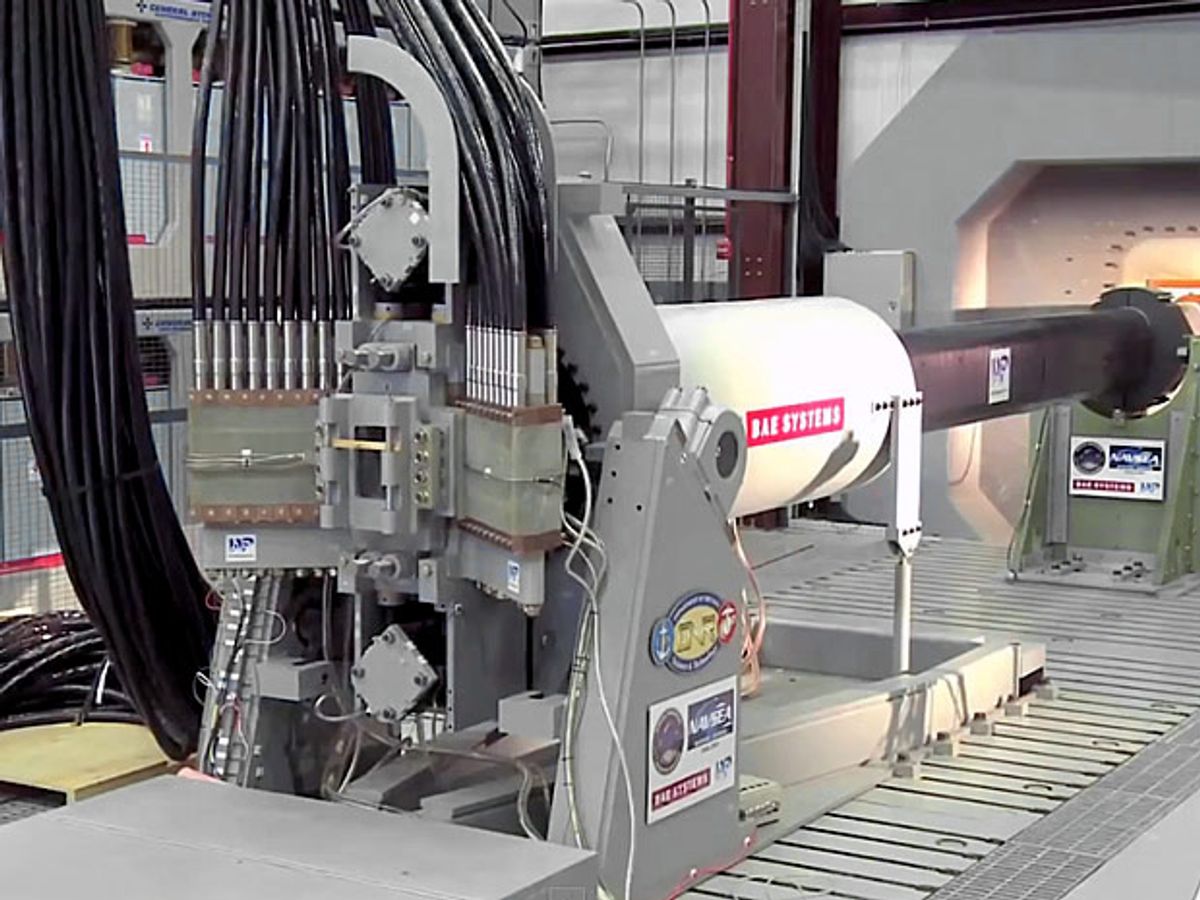BAE Systems has been refining the electromagnetic railgun that it’s been developing for the U.S. Navy. Deployment of a prototype system is scheduled for 2016, but BAE is already looking forward to what might be possible as the technology scales up in power and scales down in size. The first target might be a railgun for the Army’s next-generation Future Fighting Vehicle.
If you haven’t yet seen what BAE’s railgun is capable of, here’s a video of a test from 2012:
Railguns are an appealing weapon system for several reasons. They run entirely on electricity, using current passing through a pair of conductive rails to electromagnetically accelerate a projectile, meaning that there’s no explosive component: the projectiles are simply inert hunks of metal, making them safer to handle and store as well as an order of magnitude cheaper to employ.
A railgun can accelerate a projectile to much higher velocities than a traditional gun, too: BAE’s prototype has a muzzle velocity of up to Mach 7.5, which results in a range exceeding 200 km. And even without any kind of payload, that speed results in a projectile with a stupendous amount of kinetic energy, making railguns very effective at doing what weapons systems are supposed to do.
Both BAE Systems and General Atomics have operational railgun prototypes, developed with funding from the Office of Naval Research. In 2016, one of these systems will be installed on a high speed vessel for testing and to figure out how to integrate it onto future naval vessels, potentially including the futuristic new Zumwalt class of destroyers.
BAE feels like the benefits of railguns are too significant to restrict to just the Navy, and the company is pitching the system as an option for the U.S. Army’s next generation Future Fighting Vehicle (FFV), which could show up as early as 2019. While BAE seems confident that it would be possible to scale its railgun down to something tank-sized, there are some significant problems that would need to be solved. A naval railgun sucks down about 30 MJ of energy with each shot, which might not be an issue for a ship with a small nuclear power plant, but it’s unclear how a tank-sized vehicle could repeatably meet those power demands, even if it was firing smaller rounds at lower velocities.
Besides their appetite for electricity, railguns also have yet to prove that they’re durable enough to handle firing tens or hundreds of shots. All of that energy flowing through the barrel tries to force the railgun’s rails apart, and even small increases in clearance between the rail and the projectile can result in electrical arcs that eat away at the rails themselves. Heat management is also a problem, and railgun barrels can erode very quickly: in the past, some designs could only manage one single shot before the barrel needed servicing.
The Army hopes to make a decision on its FFV program sometime in 2016, at which point we should start to get a better idea of how realistic the idea of a railgun as a deployable weapons system is based on the shipboard trials.
Evan Ackerman is a senior editor at IEEE Spectrum. Since 2007, he has written over 6,000 articles on robotics and technology. He has a degree in Martian geology and is excellent at playing bagpipes.



